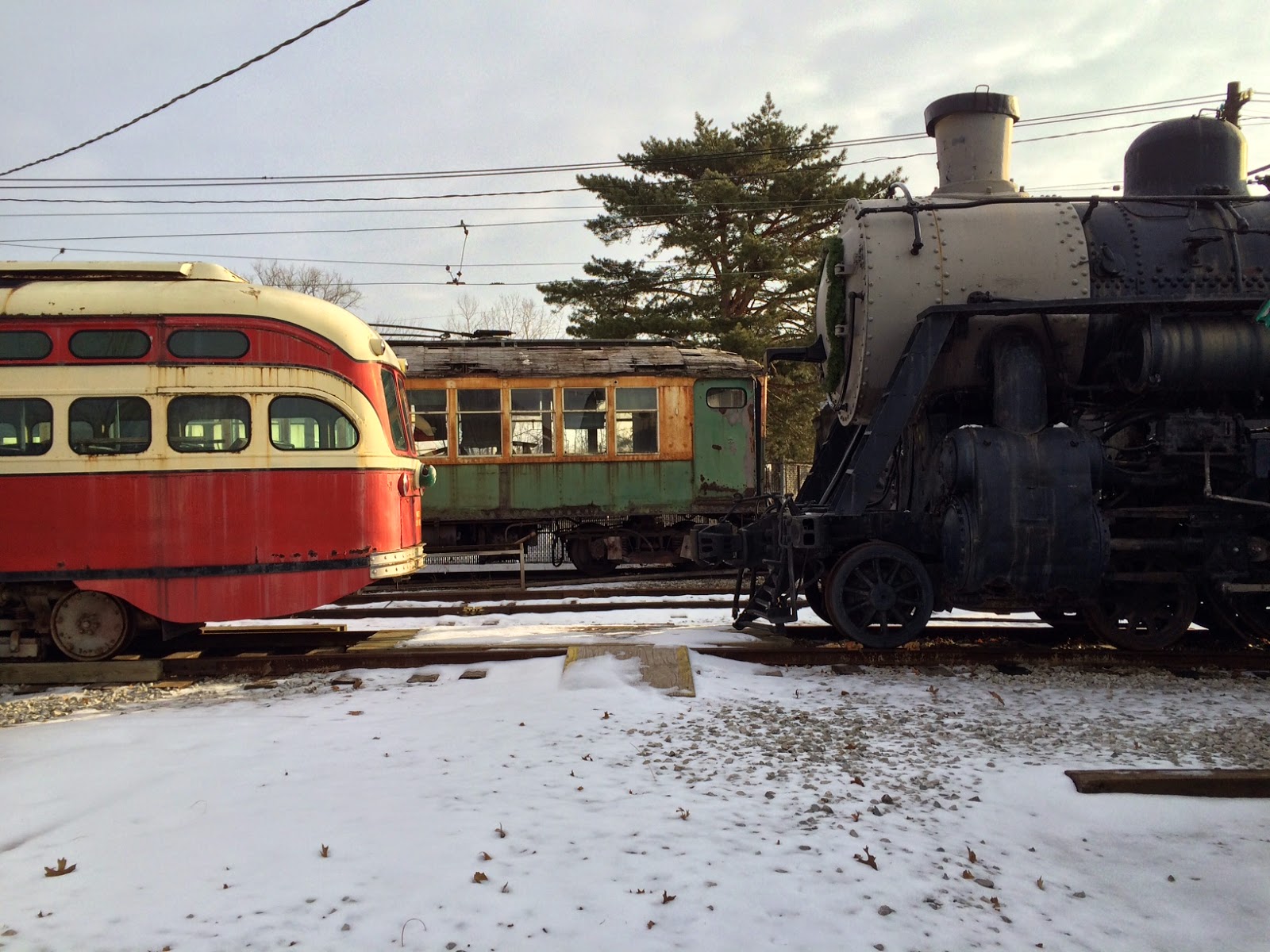On the 36, the grid boxes (which hold the cast iron resistors for the motor circuits, and weigh 30 to 40 pounds apiece) are supported by two wooden beams. (Later cars use steel beams and ceramic insulators for support.) However, at some point one of them was partly burned by an electrical fire, as it appears (L), and is also cracked, and the other one has a big crack (R) in it.
.jpg)
This was fixed by sistering in ordinary 2x4s with a bolt every foot or so. Whether this was done at Wheaton or Cleveland is immaterial, though I have an shrewd guess, of course.
But this is something that should be fixed. To avoid disconnecting the wiring, moving the boxes around, and risking further damage, we plan to let the boxes down a couple of inches onto a platform, remove the beams, make new ones, and put them back into place. It says here in the script that this should be a straightforward process.
Luckily I had a couple of defective boxes on hand that had been removed and replaced, one from the 36, one from the 319. These are nice sturdy bases for the platform, a piece of plywood on two thick beams.
Here's a picture after one box has been partly unbolted, and is supported by wedges to keep the weight off as the bolts are loosened. The bolts are rusty, of course, but otherwise this seems to work according to plan.
The rest of the day was spent painting in the smoker, as before. All of the walls now have two coats of the middle color, and two coats of the lower color on both bulkheads and one side wall. The only other things to be finished are the arm rests and parts of the baggage racks. And then the floor can be painted.
That just leaves the seats. Anybody know an easy way to rejuvenate rattan?
The Volkman guys seemed to be in the process of picking up their toys and going home. But I could be wrong about that.
.jpg)
Over in Barn 2, various Car Dept. guys have been hard at work repainting the 2153/2154. They look great. Maybe better than new.
Somebody please let me know who all helped so they can get credit.
.jpg)
As for our oldest L car, Tim is nearly done with all the windows. Each required several coats of paint and varnish. Seats are next on the agenda.
.jpg)
And Rod was finishing up the last of the brass marker light castings for the roof. These things are heavy. They can be rotated from the platform by a handle extending down through the roof. This will really be something to see.


















.jpg)
.jpg)
.jpg)
.jpg)
.jpg)
.jpg)
.jpg)
.jpg)
.jpg)





.jpg)
.jpg)
.jpg)
.jpg)
.jpg)
.jpg)
.jpg)








.jpg)
.jpg)
.jpg)
.jpg)
.jpg)
.jpg)
.jpg)
.jpg)
.jpg)
.jpg)
.jpg)
.jpg)
